| |
|
|
| Lakefield National Park - Hann Crossing |
 |
August 7 - 8 2019 |
| |
|
|
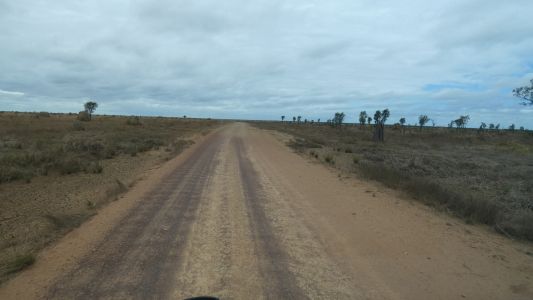 |
|
To move from Sweetwater to Hann Crossing we crossed Nifold
Plain. Wondering whether the lack of trees was natural or an artefact of
cattle and horses. |
| | | |
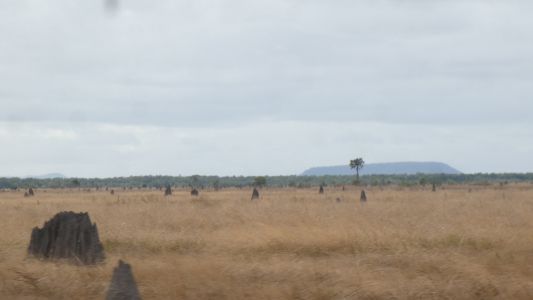 |
|
In the distance, to our north east, we suspect part of
Bathurst Head. The only high ground we can see on the map. |
| | | |
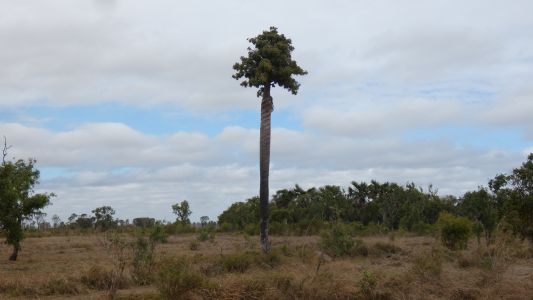 |
|
And this most odd tree. The trunk looks like a palm, the
foliage looks broad leaved. Maybe one on top of the other? |
| | | |
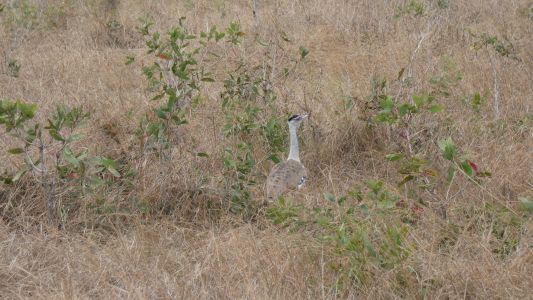 |
|
Stopped to watch an Australian Bustard disappear into the
long grass. They saunter into the bush until they simply disappear. |
| | | |
 |
|
We are far enough from the sea that the rivers are no
longer tidal. Rocks exposed during the dry season provide crossings. |
| | | |
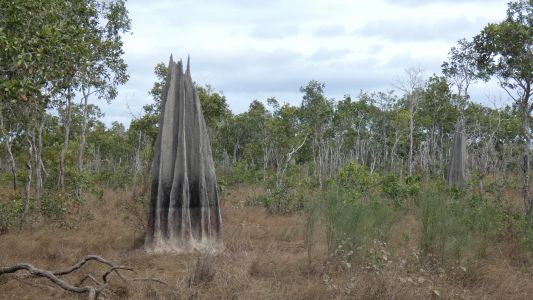 |
|
Though in the wet season we suspect from the tide mark on
this termite mound that large areas are flooded. |
| | | |
 |
|
We have campsite 16. Beside the river, within the trees.
But ..... about 300m before our turnoff, about 600m to walk, is an unnamed
(on our maps) lagoon.
With birds.
There's a short vehicle track.
But we bush bash to reach the edge at the northern end, managing to only
disturb the birds a little. They are alert and ready to fly off.
Magpie Geese and Diving Whistling Ducks.
The diving ducks are darker on the top of their heads than the Plumed
Whistling Ducks. |
| | | |
 |
|
These are Plumed Whistling Ducks. A better view than we had
at Vardons Lagoon. |
| | | |
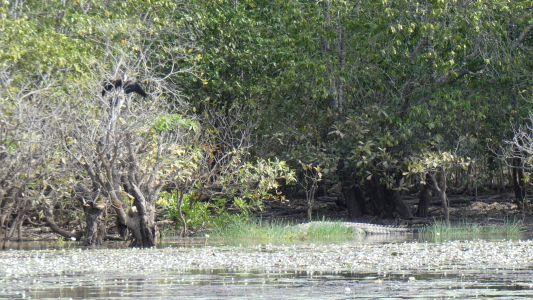 |
|
Ali has become very good at spotting crocs. Perhaps lulling
me into some sense of security, if she hasn't seen them they aren't there. |
| | | |
 |
|
We return to our campsite following the lagoon exit creek.
A sandbank where it meets North Kennedy River allows me to look along the
river. We think we are above where the river is tidal but haven't checked
the water and would be a bit surprised that its so wide. |
| | | |
 |
|
These palms, on a flat spot near the river, are tall, and
big. More than 10m tall. |
| | | |
 |
|
Dawn. Day two at Hann Crossing. We walk to the lagoon to
watch the sun rise. And perhaps the birds rise. We approach cautiously.
Unlike yesterday the ducks are line part of the shore just in front of the
vehicle track. Not sure if us or the dingo are more surprised. |
| | | |
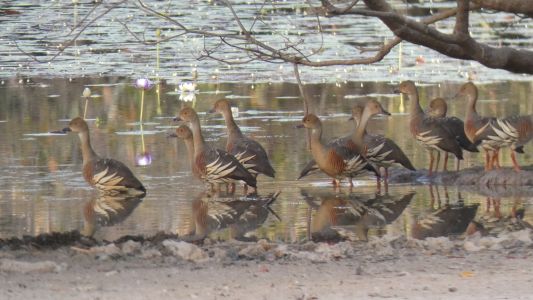 |
|
The Plumed Whistling Ducks stay until the sun catches them.
They are alert to our presence, despite standing in the water, but not
feeding. |
| | | |
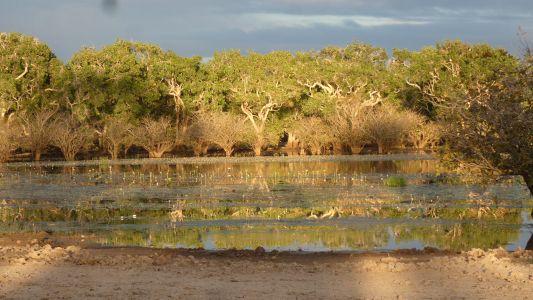 |
|
The sun found its way through the clouds to light up the
lagoon. |
| | | |
 |
|
And almost the Diving Whistling Ducks. |
| | | |
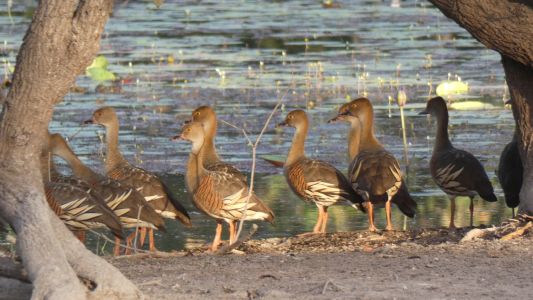 |
|
They become increasingly restless as the sun lights them. |
| | | |
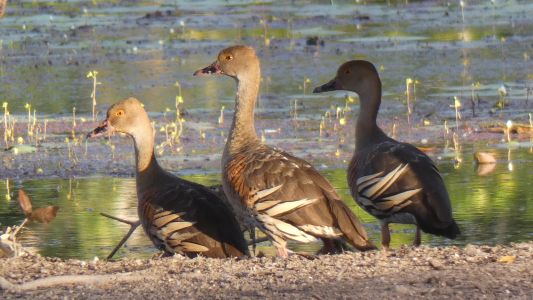 |
|
Just before they flew off, their "usual" loop to land about
100m away in shade. If such a thing existed I think this is my favourite
duck pic. Pics taken a couple of seconds either side are very different,
here I think the angles of sun and duck were aligned by the hand of
goldilocks. |
| | | |
 |
|
Just to make sure they really are Diving Whistling Ducks.
Yup. I suspect the first clue is that they are swimming away from the
water's edge. |
| | | |
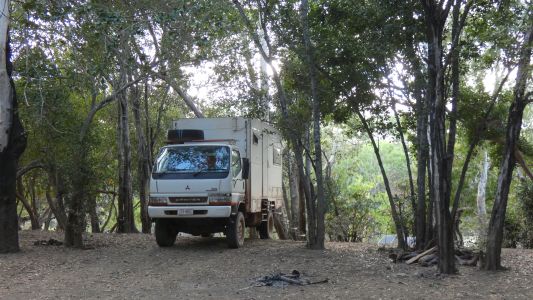 |
|
We return to the truck, lament the lack of solar, and
decide to park at the lagoon for the rest of the day to be comfortable in
the mobile bird hide. |
| | | |
 |
|
They are standing, alert, ready to fly. They see me well
before I see them. |
| | | |
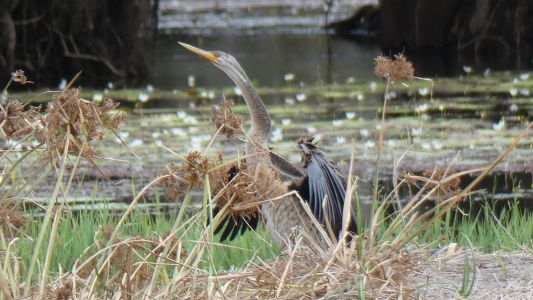 |
|
The cormorant on the other hand (or is it wing) ignores us. |
| | | |
 |
|
The crocodile cruises across the middle, with nary a
ripple. Cleverly disguised with some weed. Our amateur estimate is that
"its big". |
| | | |
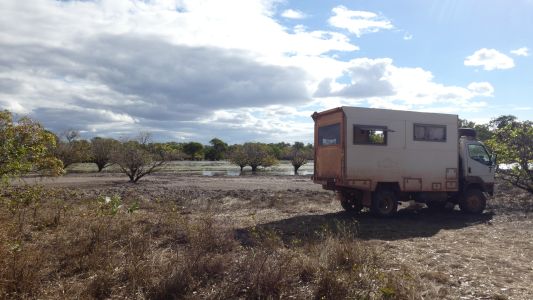 |
|
Ideal for solar, not much breeze so unusually warm inside.
We drive to where the campsite track leaves the main track to camp for the
night. Easier than another 300m to negotiate the trees near the river. |
| | | |
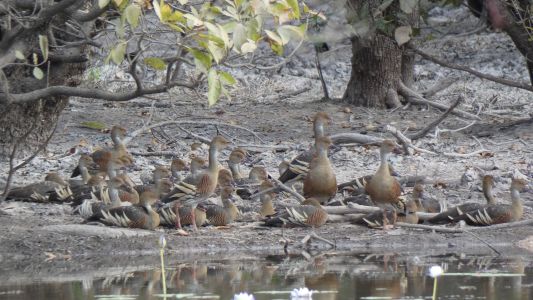 |
|
Every so often I walk slowly to the water's edge and check
on the ducks. Progressively they become more used to me and no longer
stand to attention.
Some are feeding in the shallow water around the edge. Swimming and
diving seem to be reserved for the diving ducks.
A quick walk to the lagoon the next morning was not so productive. As the
sun arrived the ducks flew off and hid in trees.We remain at a loss to know
where the birds spend the night, though we suspect in trees. Though they
must have risen early to be on the ground when we arrived before sunrise.
Around the lagoon we've seen spoonbills, magpie geese, plumed and diving
whistling ducks, green pygmy geese, lotusbirds, egrets, and listened to a
few unidentified small forest birds. |
| | | |
| Lakefield National Park - Basin Hole |
 |
August 9 - 10 2019 |
| | | |